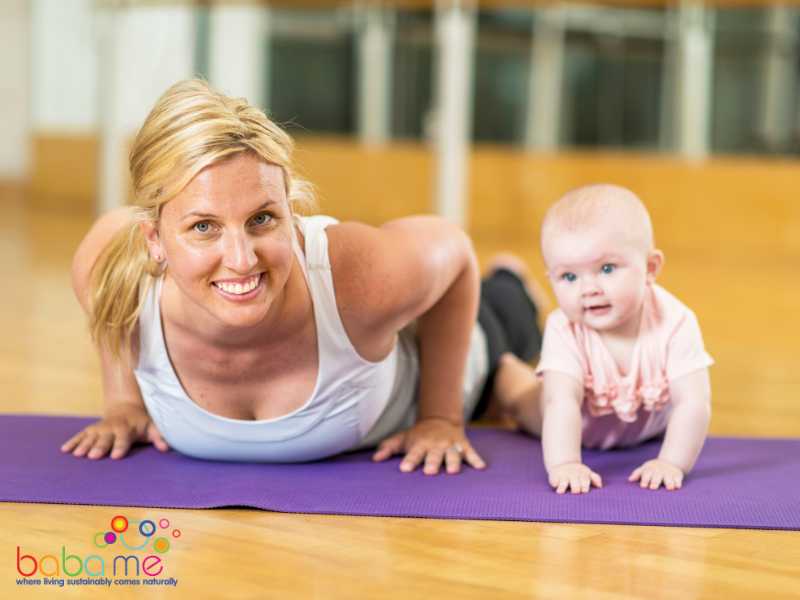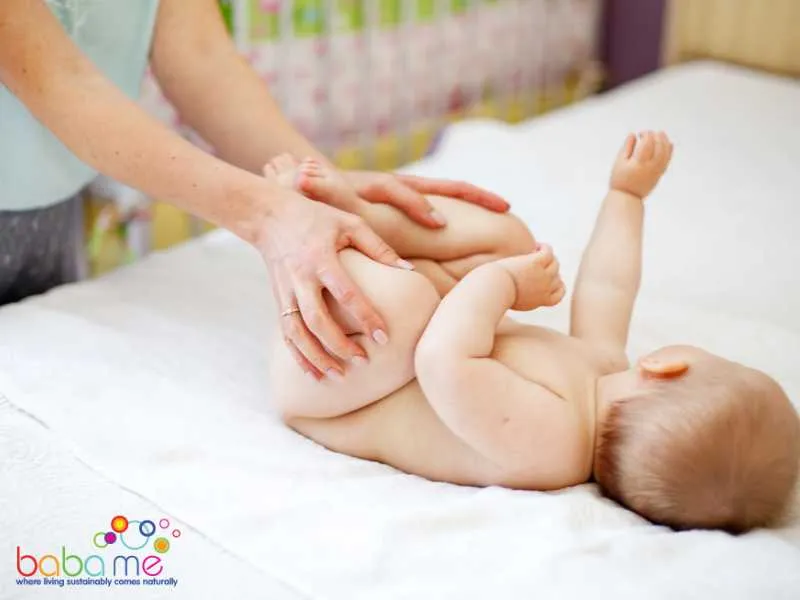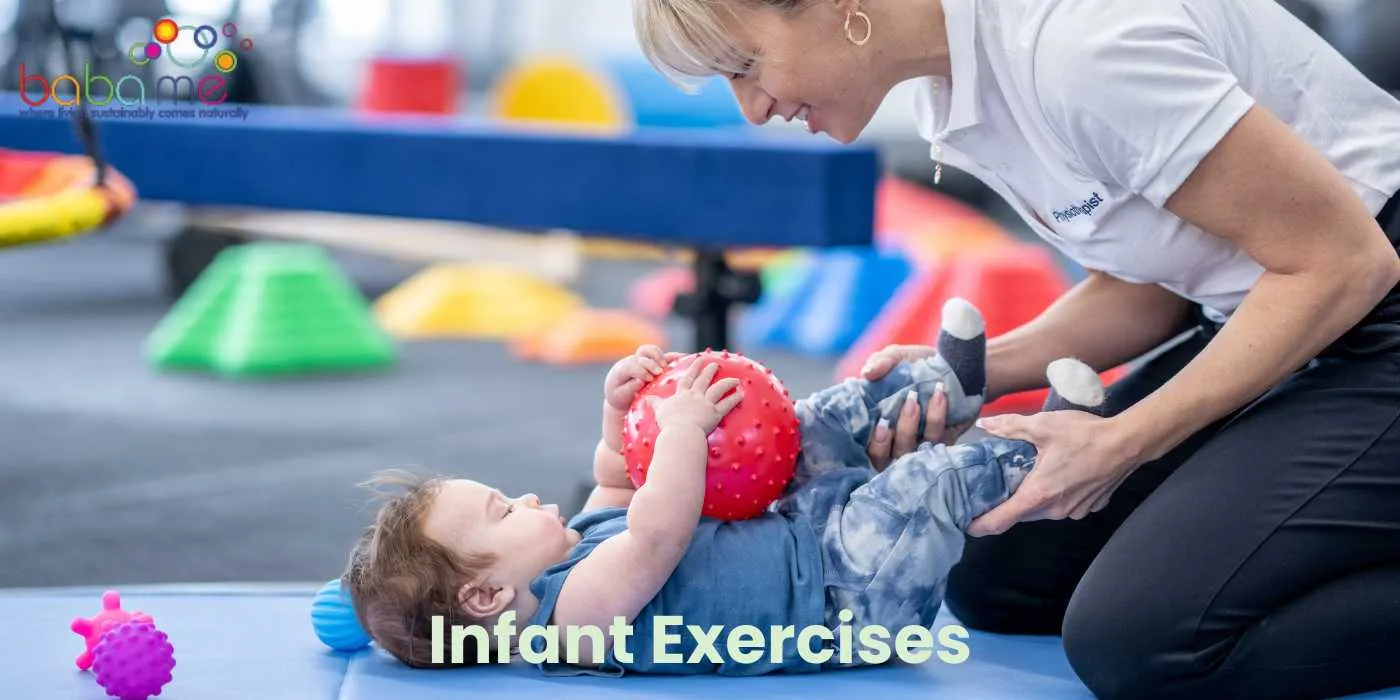The earliest stages of an infant’s life are filled with rapid growth and development. This is a time when the foundation for motor skills, strength, and coordination is laid.
While your baby might seem too tiny and delicate, there are several exercises tailored especially for them. These exercises are not just beneficial for physical growth but also foster bonding, brain development, and sensory exploration.
Dive into this guide and discover 15 delightful exercises to set your baby on the path of active, healthy living.
Key Takeaways
Exercise is important for newborns to develop strong muscles and bones, improve sleep, and aid digestion.
Safe exercises for newborns should be gentle and promote movement and flexibility.
Incorporating music into exercise routines can provide additional benefits for newborns.

Exercises For Newborns
Here are 15 simple baby exercises to get your baby moving:
Tummy Time
Tummy time is the foundation for baby neck strengthening exercises. Start by placing your baby on their stomach for short periods throughout the day. Encourage them to lift their head by placing toys or brightly colored objects in front of them. As they become more comfortable, you can increase the duration.
Bicycling Baby’s Legs
Bicycle legs is a simple baby exercise that can help relieve gas and aid digestion in your baby. To do this exercise, lay baby on their back and gently move their legs in a cycling motion. This exercise can also help your baby relax and fall asleep.
Leg Kicks
Leg kicks not only exercise the leg muscles but also promote flexibility. With your baby on their back, gently move their legs in a bicycle motion. This activity is also known to help with gas relief.
Arm Stretches
Gentle arm stretches can help improve your baby’s range of motion. With your baby lying on their back, gently stretch their arms outward and then cross them over their chest. Repeat this motion several times, always ensuring your movements are soft.

Rolling Over
Rolling over is a significant motor milestone. Encourage your baby by placing toys just out of reach, motivating them to roll from their back to their tummy or vice versa. Celebrate each roll, no matter how small!
Reaching Out
This is a great exercise for enhancing hand-eye coordination. During tummy time, place toys or objects slightly out of your baby’s reach, encouraging them to extend their arms, grasp, and play.
Pull-Ups
While lying down, allow your baby to grip your fingers and gently pull them into a standing position. This strengthens the arm and leg muscles as they attempt to support their body weight.
Balancing on a Ball
For this exercise, place your baby’s tummy on a soft exercise ball. While securely holding them, gently roll the ball back and forth. This aids in balance and core strength.
Toe to Ear Stretch
Promote flexibility with this gentle stretch. Lay your baby down and move one foot toward the opposite ear. This stretches the leg, hip, and even the side of their torso.

Patty-Cake Push-Ups
Combine playtime and exercise! During tummy time, play a game of patty-cake, encouraging your baby to push up on their hands. This enhances arm strength and brings joy through interaction.
Supported Standing
With your baby on your thighs, support them under their arms, allowing them to experience the feeling of standing. It’s a preliminary step towards taking those first steps.
Mirror Play
Mirrors are a source of endless fascination for babies. Holding them in a standing or sitting position in front of a mirror promotes interaction, movement, and self-recognition.
Bouncing
Gently bouncing your baby in a standing position on your lap stimulates leg muscles and gives them a sense of rhythm. It’s also a delightful bonding activity.
Rock ‘n’ Roll
On a soft surface, gently rock your baby from side to side. This movement not only promotes the action of rolling over but also brings a sense of comfort, akin to being rocked in your arms.
Dance Time
Dancing isn’t just for adults! Hold your baby securely and move softly to music. This movement promotes balance, introduces rhythm, and most importantly, is a fun bonding experience.
Baby Sit Ups
Baby sit-ups aren’t exactly like the sit-ups adults do for abdominal exercises. Instead, it refers to the practice of encouraging your baby to pull themselves into a sitting position from lying down, with your assistance. This helps strengthen their core muscles, which are crucial for later milestones like sitting up independently, crawling, and walking.

The Importance of Baby Exercise
Strengthening Neck Muscles
One of the most significant benefits of baby exercises is the strengthening of the neck muscles. As a baby starts to engage in tummy time, they’ll attempt to lift their head, using and toning those essential neck muscles. Without adequate exercise, babies tend to have weaker neck support, which can delay certain motor milestones.
Promoting Motor Skills Development
Exercise is vital for a baby’s motor development. As babies engage in movements, whether it’s a simple stretch of the baby’s arms or an attempt to roll over, they’re taking the first steps towards crawling, standing, and walking. By letting your baby lie on their stomach and gently moving their legs with knees bent, you’re stimulating them to kick, push, and eventually crawl. Not only will you have a happy baby, but you are building up their muscles and baby’s joints to aid baby’s development.
Building Abdominal Muscles
It might seem surprising, but babies do work on their abdominal muscles! Simple exercises, where a baby tries to pull up or where you gently push their knees towards their belly, can help in toning the abdominal muscles. These are the same muscles they’ll use when they start sitting up without support.
Enhancing Hand-Eye Coordination
As your baby starts grasping objects, their hand-eye coordination begins to develop. Whether it’s reaching out for a dangling toy or responding to playful interactions with mom and baby, exercise plays a crucial role in refining these skills.
Bonding and Emotional Growth
Beyond physical development, exercises are also a bonding moment for mom and baby. It’s a time of face-to-face interaction, of shared smiles and laughter as you complete a fun exercise. This bonding is essential for a baby’s emotional well-being and can set the foundation for trust and attachment.

Benefits of Music and Exercise for Newborn
Introducing music and exercise to your newborn can have several benefits. Here are a few ways that music and exercise can help your baby:
1. Promotes Energy and Movement
Music can be a great motivator for your baby to move and exercise. Playing upbeat music can encourage your baby to wiggle, kick, and dance. This movement can help your baby develop muscles and improve their overall physical health as well as being baby neck strengthening exercises.
2. Enhances Hand-Eye Coordination
Exercise can help your baby develop hand-eye coordination. When your baby reaches for objects or baby starts grasping, they are using their hand-eye coordination. Incorporating music into exercise can help your baby focus on the task at hand and improve their coordination.
3. Boosts Brain Development
Music can have a positive impact on your baby’s brain development. Studies have shown that music can help stimulate brain activity and improve memory and language skills. Exposing your baby to music and exercise can help promote healthy brain development.
4. Improves Mood and Sleep
Music has the power to soothe and calm your baby. Playing soft, gentle music can help your baby relax and fall asleep.Exercise can help improve your baby’s mood and reduce stress levels. This can lead to a happier, more content baby.

Exercise guidelines
Exercising a newborn doesn’t involve rigorous routines or specialized equipment. Instead, it’s about gentle activities that promote bonding, motor development, and a solid foundation for future milestones. These guidelines offer a safe approach to introducing physical activities in the earliest weeks of your baby’s life.
1. Safety First
Gentle Touch: Newborns are fragile. Always ensure movements are slow and gentle.
Supervision: Never leave your baby unattended during exercise time.
Comfortable Environment: Ensure the room is neither too cold nor too hot. A soft blanket or play mat can provide a comfortable surface.
FAQS on Physical activity for Newborns
When should I start exercising my newborn?
Exercising a newborn can begin almost immediately, but it’s different than what one might typically consider as “exercise”. Gentle movements and bonding activities, like skin-to-skin contact and baby massage, are great ways to initiate.
What exercises should I do with my newborn?
For newborns, exercises are often subtle:
Laying on their tummy: This initiates the earliest form of tummy time, promoting neck strength.
Gentle leg movements: Moving their legs in a bicycle motion can aid in digestion and gas relief.
Hands to face: Guiding their hands to their face can encourage self-soothing and early motor skills.
How do you exercise a 2 week old baby?
By two weeks, continue with the activities mentioned above and extend tummy time sessions, always ensuring they are supervised. You can also start introducing gentle limb stretches, moving their arms and legs outward and then back in.
How do you exercise a 1 month old baby?
For a 1-month old, increase the duration of tummy time sessions and introduce dangling toys during these sessions to encourage reaching and grasping. Gentle rocking and swaying motions while they lay on their back can also be introduced.
What exercises can I do with my 3 month old baby?
By 3 months, many babies have greater neck control. Incorporate more tummy time, introduce play mats with overhead toys, and gently assist them in “mini-pushups” during tummy time to strengthen those arms. Some babies might also enjoy being pulled to a sit from a laying position, with full support, of course.




